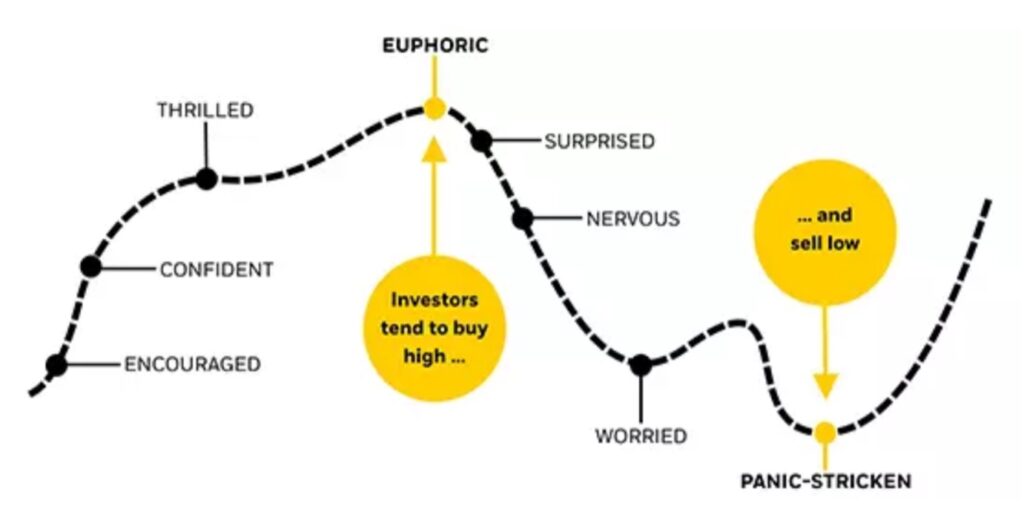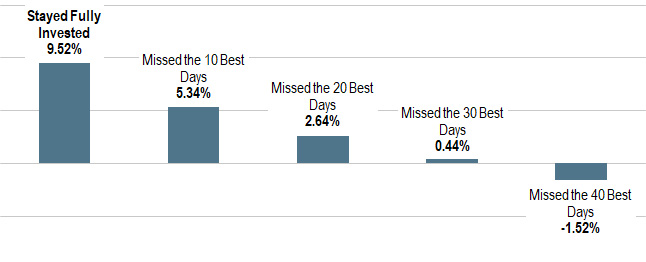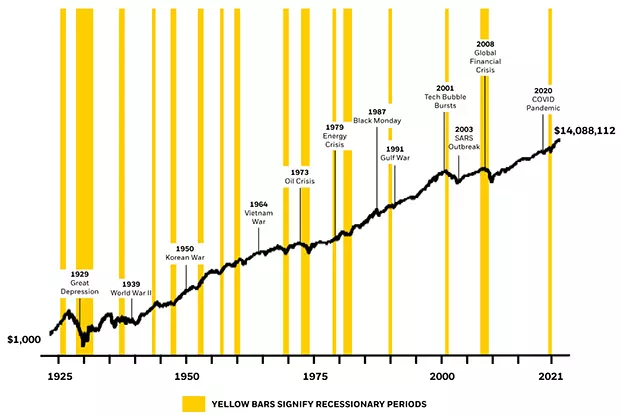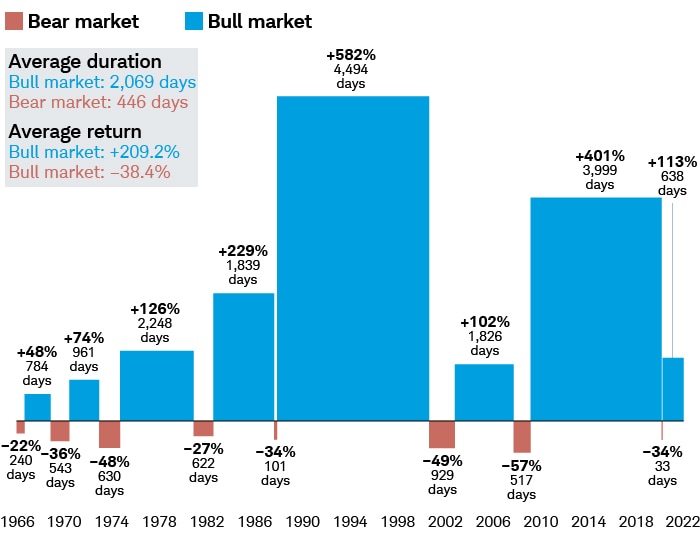Market volatility? Simply put, volatility is change in asset prices (ups and downs) based on market conditions. Broadly speaking, changes in asset prices or volatility is caused by a number of factors, including the following:
• Business fundamentals – these are factors specific to a business, which may include change in management, change in strategy or business model, product launches or failures, possible takeover or merger, change in financials (revenue, profitability, cashflow) and future expectations.
• Macroeconomic factors – this includes changes in inflation, interest rates, GDP growth rates, employment data, manufacturing activities amongst many economic factors.
• Geopolitical conditions – Wars and conflicts, trade pacts, elections etc.
• Demand and supply of shares or investment – this is dependent the factors mentioned above.
• Investor sentiment – resulting partly from perception of the future, possibly greed and/or fear!
Volatility is embedded in asset prices and financial markets. At times it is small, which is ‘business as usual’ for financial markets, whilst during uncertain times volatility can really shoot up to unnerve many investors. In such uncertain times, fundamentals play lessor of a role in volatility, but emotions (investor sentiment) take the driving seat. This is the situation that we observe being played out from time to time. The following snapshot by BlackRock offers a perspective on how emotions reflect in market cycles.
Stay the course: controlling emotions during the ups and downs of the market (it is only for illustrative purposes)

So, what is in our control? Can we control market volatility? Big No. But we, as investors, have control over our emotions. We can best manage volatility by not allowing our emotions to drive our investment decisions. It is prudent not to sell in panic, but remain patient by holding onto quality investments. In fact, market volatility brings opportunities to accumulate wealth for those who are patient and take a long-term view when investing. Benjamin Graham, the father of value investing called it ‘Mr Market’ in his famous investing book ‘The Intelligent Investor’. He pointed out that financial markets are always not rational as they are operated by humans and humans are subject to emotional biases. It is investors’ emotions that make them greedy at times to turn to over-optimistic investing views and stock prices soar. At other times, they observe excessive pessimism driven by fear, and stock prices fall below their intrinsic values. The intelligent investor takes the opportunity of this market volatility and buys when prices are down and sells when they are showing greed and over-optimism. This is something we all do when we buy other items we use in our routine life. Why do we not do the same thing when it comes to investing?
According to Benjamin Graham, “Basically, price fluctuations have only one significant meaning for the true investor. They provide him with an opportunity to buy wisely when prices fall sharply and sell wisely when they advance a great deal. At other times he will do better if he forgets about the stock market.” There are some time-tested best practices during periods of high volatility. Investors can turn volatility to their advantage by considering these time-tested practices in order to protect their portfolios:
- Set your investment objectives and know your risk tolerance
The fundamental principle of investing is to profile yourself. What are your investment objectives? What is your willingness and ability to take risk? Are there any investing constraints in front of you (investing time horizon, your financials and tax situation, any unique circumstances, etc.)? Once you set your investment objectives and risk tolerance right, then the rest of the job becomes easy. What you need to do is just to stick to your goals and invest accordingly, irrespective of market volatility.
- Remain invested and invest opportunistically
Having control on your nerves and ignoring the market turbulence is crucial to successful investing. However, it requires a lot of discipline and patience to practice this. Perfect market timing (sell high buy low) is impossible on a consistent basis – no one has done it successfully so far. As illustrated below, remaining invested in the market is the optimal strategy and buying more, when the ‘Mr Market’ offers you the bargain opportunity, can enhance return-risk profile.

- Focus on Quality and Value opportunities
High quality businesses have the high probability to survive the market turmoil. As stock prices follow the fundamental values of their businesses over the long-term, the stocks of quality companies recover the most if they get hit by increased market volatility. During the market chaos, many stocks of the quality companies offer value opportunities (margin of safety) for true investors, therefore, taking advantage of the market anxiety generally helps long-term investors.
- Right asset allocation and maintain a well-diversified portfolio
Investment portfolio diversification really helps, especially, during increased market volatility. Different asset classes have varying degrees of correlations (sometimes negative correlations) with each other, therefore, making different asset classes part of your portfolio reduces the impact of volatility. In general, a well-diversified portfolio consisting of a wide range of assets including stocks, bonds/sukuks, commodities, and real estate is likely to have a greater downside protection as opposed a portfolio fully invested in equities, particularly in volatile periods.
- Turning volatility to your advantage
Market volatility is not always bad. These market fluctuations bring bargain opportunities for true investors (remember the Graham’s Mr Market parable). It is good to have some liquidity (cash) in hand to take advantage of depressed asset prices. Invest more when you find assets trading below their intrinsic values. Increased volatility is not the end of this world – as Ben Carlson, CFA quoted in his interesting article, “The world never actually comes to an end and if it ever does it won’t matter what your portfolio looks like”.
- Invest for the long term
Investors should always keep their investment objectives’ broader picture in mind when struggling with market turbulence. Do not become victim of short-term volatility-induced panic selling. This will put you in a guaranteed loss situation. Invest for the long term as asset prices recover (see below) after a period of drawdowns as there are always innovations and advancements in how the businesses are run.
Volatility vs. Long-term investing – Growth of $1k in S&P 500 SINCE 1926 (01.01.26 to 31.12.21)

- Be patient and avoid losses
True investing is not a speculation, nor it is a get-rich-quick scheme. Rather, it is a disciplined approach to accumulate wealth over the long-term. Patience in investing is critical. On average, market Bull periods are longer than Bear periods, and returns in bull periods are significantly higher than losses (negative returns) in bear periods as illustrated below. Do not book losses during times of increased market volatility, markets do recover.
Remember Warren Buffett’s two investing rules:
Rule1: Never make a loss
Rule 2: Do not forget the rule 1

And finally ….. have an open discussion with your Financial Adviser
Keeping calm and controlling your emotions during increased market volatility is difficult but it is the right thing to do. However, if you feel nerves and need assistance, talking to your Financial Adviser is always fruitful.
You can book a Free consultation (https://simplyethical.com/help/#book-appointment) with one of our Financial Advisers to learn more about our investment approach and how we can help you.
Disclaimer
Past performance is not a reliable indicator of current or future returns. This overview contains general information only and does not consider individual objectives, taxation position or financial needs. Nor does this constitute a recommendation of the suitability of any investment strategy for a particular investor. It is not an offer to buy or sell or a solicitation of an offer to buy or sell any security or instrument or to participate in any trading strategy to any person in any jurisdiction in which such an offer or solicitation is not authorised or to any person to whom it would be unlawful to market such an offer or solicitation.

